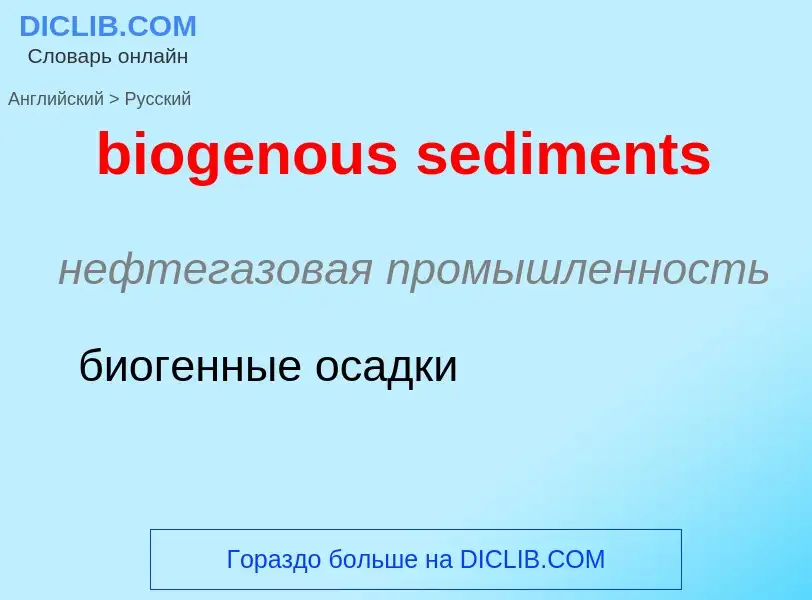Tradução e análise de palavras por inteligência artificial ChatGPT
Nesta página você pode obter uma análise detalhada de uma palavra ou frase, produzida usando a melhor tecnologia de inteligência artificial até o momento:
- como a palavra é usada
- frequência de uso
- é usado com mais frequência na fala oral ou escrita
- opções de tradução de palavras
- exemplos de uso (várias frases com tradução)
- etimologia
biogenous sediments - tradução para russo
нефтегазовая промышленность
биогенные осадки
нефтегазовая промышленность
пелагические осадки
['sedimənt]
общая лексика
осадок
отстой
нанос
отложение
отстойный
седиментационный
множественное число
наносы, отложения
нефтегазовая промышленность
осадок, отстой, гуща на дне
осадочная порода
вода и грязь из нефти
нефтяная эмульсия
осадочные отложения, наносы
Смотрите также
существительное
['sedimənt]
общая лексика
осадок
отстой
осадок, отстой
геология
отложение
осадочная порода
осадочная порода, отложение
глагол
общая лексика
осаждаться
отстаиваться
давать осадок
отстой
Definição
Wikipédia
Pelagic sediment or pelagite is a fine-grained sediment that accumulates as the result of the settling of particles to the floor of the open ocean, far from land. These particles consist primarily of either the microscopic, calcareous or siliceous shells of phytoplankton or zooplankton; clay-size siliciclastic sediment; or some mixture of these. Trace amounts of meteoric dust and variable amounts of volcanic ash also occur within pelagic sediments. Based upon the composition of the ooze, there are three main types of pelagic sediments: siliceous oozes, calcareous oozes, and red clays.
The composition of pelagic sediments is controlled by three main factors. The first factor is the distance from major landmasses, which affects their dilution by terrigenous, or land-derived, sediment. The second factor is water depth, which affects the preservation of both siliceous and calcareous biogenic particles as they settle to the ocean bottom. The final factor is ocean fertility, which controls the amount of biogenic particles produced in surface waters.

!['''Total sediment thickness of the ocean floor'''}} Deposits are thick on the continental shelves, and thinnest in the deep sea on either side of the [[mid-ocean ridge]]. '''Total sediment thickness of the ocean floor'''}} Deposits are thick on the continental shelves, and thinnest in the deep sea on either side of the [[mid-ocean ridge]].](https://commons.wikimedia.org/wiki/Special:FilePath/Marine sediment thickness.jpg?width=200)
